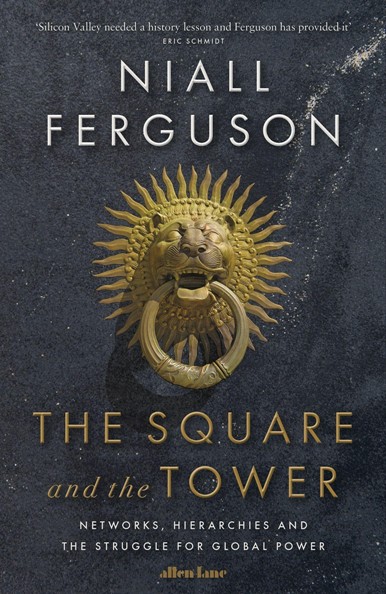The Square and the Tower: Networks, Hierarchies and the Struggle for Global Power
Organizational Network Analysis through the lens of historical events

This comes from one of my favorite authors, Niall Ferguson (fully acknowledging my biases). His book ,The Cash Nexus and the Ascent of Money, played an influential role in how I thought about the financial markets so I was eagerly excited when he released The Square and the Tower back in 2018.
By nature Niall is a historian and in this book he takes a fascinating look at the power dynamics between formal and informal networks. He has stated that the inspiration for this book came from the research he was doing for his book on Henry Kissinger. As Naill was researching, he realized that Kissinger saw the world moving away from mid-twenty century hierarchies into a new world where networks would be more important. In fact there was an article in 1973 that stated he was the most connected man in the world! Below is an example of how the Nixon-Ford network was connected and where Kissinger was positioned. It illustrates how he was positioned in both power and connectivity to others. When companies do this exercise, it is called an Organizational Network Analysis.
His point is illustrated throughout the book with several historical examples. He covers Illuminati, Martin Luther, Medici family, Mafia, and the current array of social networking tools that are available to us today. I particularly enjoyed one excerpt that outlines a line from the book The Art of Trade (from 1494) where it provides advice to merchants “It is not expedient for a merchant to have to do with the courts, nor above all to involve himself in politics or the civil administration, because these are perilous areas”. Even back then the concept of red tape and bureaucracy was strong and being warned against.
His premise goes against the common idea that access to information and education would be an equalizer, in fact his research in network science suggests that it produces inequality. The nodes have a tendency to be attracted to well known nodes and there is disparity in the system i.e. the rich get richer or the powerful become more powerful. He states that networks are the least egalitarian systems.
At the heart of it, the book speaks to how networks operate and how “tools” facilitate our actions but do not necessarily dictate them.
Naill shared seven insights on how networks operate:
- No man is an island – We all operate as in a system
- Birds of a feather flock together – Networks have a tendency to attract like minded individuals, however it may not always be clear what the shared attributes are.
- Weak ties are strong – The network can grow and take advantage of other clusters of networks as long as there is a connection, even a weak one.
- Structure determines virality – How the networks evolve will influence how information gets shared in terms of reach and speed.
- Networks never sleep – Networks are dynamic as they evolve and adapt.
- Networks interact with one another, and when they do, magic may happen.
- The rich get richer – The power of the nodes (i.e. individuals) are not evenly distributed.
The book addresses the topics mainly from a historical perspective vs. an in-depth analysis of networks and hierarchies. For me, that made it more accessible and easier to pull out the broader implications.
That got me thinking about the workplace and how now we see a similar shift taking place with organizations wanting to “flatten out”, distribute information and decentralize decision making.
Implications from a Talent Perspectives
While this is not a traditional “HR Book” it has a lot of applications. I would recommend it for anyone interested in how networks operate outside of the formal hierarchical structures.
As mentioned above, some organizations conduct Organizational Network Analysis to get an understanding of what networks operate in their organizations, a fascinating area of work. It is a technique for researching socio-technical and communication networks inside of organizations. With the help of this method, an organization’s employees, groups, tasks, knowledge, and resources may be represented statistically and graphically. Organizational Network Analysis provides an additional lens to view how the organization operates. An example of this is when you join an organization and start with the new employee orientation. You might have a representative of a function come and talk with the group on how their team operates. However, you meet up with a new colleague during a lunch break and he tells you all about how things operate in practice. In that instance it is the “watercooler” talk that often reveals who really calls the shots! There are a lot of great tools that can help Organizational Network Analysis for companies to begin this journey.
This also speaks to the practice of systems thinking that some organizations conduct. From a learning perspective, I would also recommend the book The Fifth Discipline by Peter Senge for an in-depth look into this topic.
The importance of a network in a meaningful career can not be understated hence, we incorporate how to build intentional relationships in the Building Career Capital for UAE and other GCC talents.







Thanks a lot. I never heard about this book.
Good article. Thanks for sharing.
I liked this phrase: “No man is an island – We all operate as in a system”.